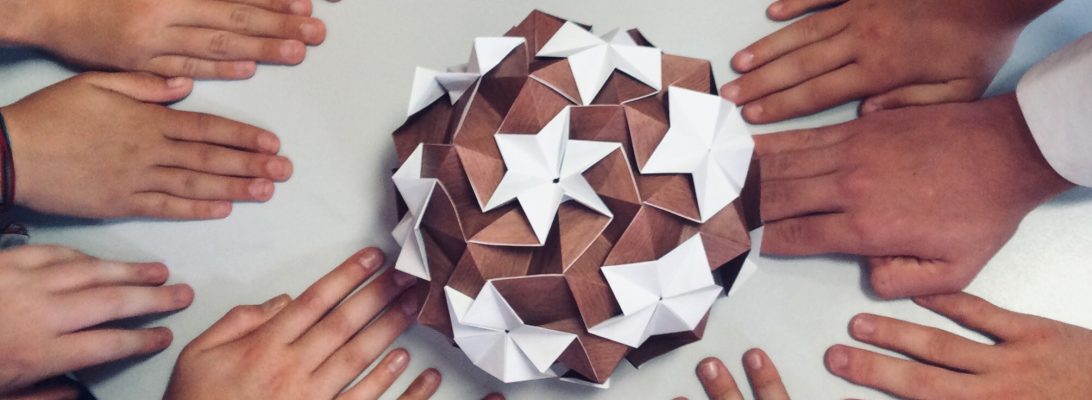Now I have never tried MODULAR origami – it is a huge and enthusiastic movement in the society of paper benders – making modules that lock together to make a compound shape. I found instructions for Francis Ow’s 60° Unit and thought I would give a tetrahedron (6 of these units) a go:
I … got a little carried away and discovered they can nestle amongst each other in a lovely geometrically interesting sort of way. With this module, apparentyl, it is possible to complete 5 (yes, you heard me, 5 = 5×6 = 30 strips of paper) intersecting tetrahedra – scale beat me here (the tiny units are just too fiddly to lock together – must try it on A4 scale).
This is a new frontier for me, and it interests me strangely – the units are self-centring, lock each other so require no glue, have an amazing tensile strength when locked together and are simple to fold (1-2mins each). Based on 1/3 of a square, the folded thickness apparently is mathematically proved to allow a 5-intersection – we shall see.
You should try this – I enjoyed the modular approach and will probably try another in the next month (there are lots of flavours that do all sorts of things geometrically speaking) – Engineers (and those budding ones) should have a fiddle – something stunningly beautiful about regular geometry (better not say this too loud, maths teachers might hear me)













